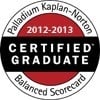As an industrial technologist with an MBA, I've spent countless hours wrestling with standard costs. I've determined the standard cost for various products and many processes using practical standards with flexible budgets and overhead analysis.
I'm going to get into setting direct material, direct labor, and variable overhead standards. Evaluating the outcome using tools like direct material variance analysis, alongside price and quantity standards variances has helped. This will include flexible budgets and overhead analysis—a crucial combination for staying agile in today's business environment.
Understanding Standard Costs
Standard costs are predetermined estimates of what a product *should* cost under normal operating conditions. They're a target, like benchmarks that can be tracked.
These standards aren't developed haphazardly. Thought, data, and research go into creating them. It's about balancing a reasonable level of efficiency and the resources needed.
Direct Material Standards
Direct material standards consider the cost of materials used in production. Direct materials are important.
I'd analyze historical data and get quotes from suppliers. I considered market trends to get a realistic price. Quantity standards require detailed specs and a good understanding of waste, scrap, and spoilage factors. The standard price might depend on purchasing a particular amount.
Direct Labor Standards
Direct labor focuses on labor cost. I use standards.
We are estimating labor hours per unit and the associated labor rate. Time studies are important, along with consideration for employee skill levels and efficiency expectations.
Variable Overhead Standards
Variable overhead is made up of the indirect costs. It's hard to trace it straight to the products, but this type of cost is still important. Consider supplies, utilities used in manufacturing, machine hours, and depreciation.
The variable costs will increase or decrease with the manufacturing and distribution output. I relied on historical data and activity levels. It is helpful for calculating allocation rates based on a cost driver, like machine hours.
Variance Analysis: Unveiling Deviations in Cost Control
Once standards were set, the real work continued when there were deviations. This is where variance analysis comes in. It's a vital process of comparing actual costs to these predetermined standards, pinpointing deviations in prices and labor.
A "variance" is just a way of saying a cost *difference*. Did it cost more or less than we predicted?
Direct Material Variance Analysis
This type breaks down into two major components: Price and Quantity variances.
Price variance looks at differences between the actual cost of materials versus what we had set in the budget. Quantity variance shows us if we used more, or less, material than we expected for the actual production output.
Isolating and Analyzing Variances
Just knowing there's a variance isn't enough. It needs to be found and researched to improve things.
The detective work starts by isolating who, or what, is accountable for the variance. Then determining "Why?" Was it a one-time material price increase? Or was it inefficient machine operations that caused excessive scrap? Finding the cause gets things moving to fix it.
Direct Labor Variances
This method of analyzing is applied similarly to the variance method described earlier.
Labor rate variance helps when the average hourly rate paid to workers differed from the standard. The labor efficiency variance determines if workers took more, or less, time than expected to produce the goods.
Variable Overhead Variances
There's more complexity here than you see on the outside. There are different components in calculating this data. These might change or fluctuate over time as well.
This gets evaluated through spending and efficiency variances. The spending variance shows changes in actual spending for various overhead items like rent and supplies. The variable overhead efficiency variance looks at different factors to complete a project.
Management by Exception: Focusing Efforts
Variance analysis generates numbers and also generates actions. "Management by exception" can be used.
Not all variances are the same and nor equally bad. Some deviations may be expected, or they might require the most attention right now. Using resources and priorities could impact efficiency. Applying management control here helps streamline operations.
Criteria for Exceptions in Flexible Budgeting and Overhead Analysis
When determining an exception, there are four primary factors to consider: Materiality, consistency, control, and nature. The criteria are detailed below:
| Criteria | Description |
|---|---|
| Materiality | Is the variance significant, money-wise? A tiny difference on an inexpensive component may not be important, but a difference that's more than a 10% deviation, for instance, could impact profits. |
| Consistency of Occurrence | Does this variance keep showing up? Frequent issues will likely suggest a process that needs an adjustment, possibly indicating that training might be needed. |
| Ability to Control | Can someone change the root cause? If a variance is due to an external factor like a material supplier having shortages, then action might be limited to adjusting. |
| Nature of the Item | Does this variance indicate some serious underlying problems? Even small consistent variances in an operation might suggest systemic inefficiencies, security issues or even safety concerns. |
Statistical Analysis
Tools will sometimes add confidence to find the exceptions. It gives an additional analysis factor.
Statistical process control (SPC) is used to separate "common cause" variation from "special cause" variation. Common cause variations are minor fluctuations. Special causes usually indicate significant events that needs a review and analysis of various controls and processes.
Flexible Budgets and Overhead Analysis
Traditional budgets are set on a fixed cost volume. They are great for long term strategies, but business moves quicker than these predictions are updated. Flexible budgets can move things dynamically; a flexible budget gets updated as key numbers change.
This is more responsive. Flexible budgets provide insights when a rigid model can't, such as looking at various revenue numbers that go up and down. The budgeting process benefits significantly from this adaptability.
How Flexible Budgets Work
It starts by categorizing the company's costs into fixed or variable. We might even separate these further into direct labor, direct materials, variable costs or fixed costs.
With a clearer view, you can do what-if testing for budgeting. Change the planned units to a new total output volume and watch how each of the revenue and expense lines changes in relation to it. We now get updated totals. This helps highlight the actual level of activity impact.
Applying to Overhead Analysis
While fixed overhead remains the same, flexible budgets have even greater value. By connecting variances in fixed cost volumes, it helps give data needed to adjust processes to continue to hit business goals.
The flexible budgeting method helps compare to standards. Flexible budgeting models will update and "flex" based on actual business data. Now, when we compare the budgeted amounts to our flexible figures, it improves reliability.
Practical Application: Examples from Experience
During an actual project I oversaw, we saw how flexible budgeting helped analyze changes that happened quickly.
It began like many other projects. We began setting various costs. The budget seemed normal until a supplier suddenly ran out of needed products. This created market scarcity with high prices.
What we Changed and Learned
Using a flexible approach gave new insights. It made it easy to analyze what we could do and make critical decisions on how we moved forward.
We discovered which overhead costs went up as volumes changed, not just from prices changing. Now decisions weren't emotional, but had actionable insight to plan what to do. This also showed the importance of having a performance report readily available for quick decision-making. We could pinpoint issues impacting the relevant range of production.
Automating certain aspects of the reporting, maybe even leveraging process automation, could have further streamlined our response.
FAQs about flexible budgets and overhead analysis
What is a flexible budget for overhead?
It is a budget where you find the costs that vary as operations change. This differs from standard cost models since changes happen more often, but its still accurate. The overhead can consist of all indirect costs like materials, labor and expenses needed.
It might even factor equipment use and rent for buildings. All are vital operating expenses, especially indirect ones. Finding ways to measure or factor it in your reporting, gives greater analysis insight.
How to calculate flexible budget variable overhead?
First categorize and set which operating overhead costs would go up or down if activity goes up or down. A normal standard cost budget, might assume you will make and ship 2,000 units per month, which could turn into a "fixed" view. With flexible methods, the expected overhead total adjusts based on current volumes.
Costs like direct labor needed for increased shipping might go up if units sell higher, or utilities to keep manufacturing plants going, might adjust. Calculating it is determining the expected ratios in relationship with how much product volume moves, versus the impact. Various costs, like a salesperson's commissions, might adjust based on these insights, as well as shipping department hours to hire temporarily, or even costs for supplies.
What are the 4 steps in flexible budgets?
Step 1: Find which measure applies to your goals and company. This would normally be a count that changes, such as customers or patients you plan on. Typically it's the number of items, products, orders or volume the business is tracking.
Step 2: Figure out how the costs act as your measures change. Rent might remain fixed no matter the numbers, and materials are often 100% impacted with each extra item sold.
Step 3: Estimate the expected overhead with each of those categories with that. Find ways to express the changes in rates so its easier to understand and more visual. It might just simply be each overhead itemized that is a cost of goods expense on one end of the table, with activity rates on the other side.
Step 4: Track your company metrics (daily or even weekly). Watch your current volumes and make calculations based on flexible insights. Share this company-wide to the responsible teams. All rights reserved to those who utilize this valuable information.
What is the overhead flexible budget variance?
This number shows how flexible insights help with cost accuracy versus the original costs or goals. Variance simply finds differences (negative or positive) based on flexible adjustments.
To illustrate how overheads act as various measures in activity move up or down, compare to various planned static budgets. Then find ways to visualize and track changes.
Conclusion
Flexible budgets and overhead analysis is not an exact prediction of the future, and no budget is 100% right all the time. When markets change or the economy turns, it can give additional clarity to those old goals, which now seem old.
It provides decision makers needed intelligence to use today, right now when adjustments may need made quickly. If we know a critical vendor will not deliver products, we can adjust based on reality, versus old goals that cannot be. I've found value with these processes over the years.
Flexible budgets and overhead analysis can keep processes agile, which keeps companies ahead of the unknown that will definitely happen soon. These analysis techniques help businesses adapt, making the most of every resource, even in times of uncertainty. This ensures no unforeseen experience issues down the road.
We are a full-service Hubspot Certified Inbound Marketing and Sales Agency. In addition, we work to integrate your SAP System with Hubspot and Salesforce, where we have a deep delivery capability based on years of experience. Please our book a meeting service to get started.







